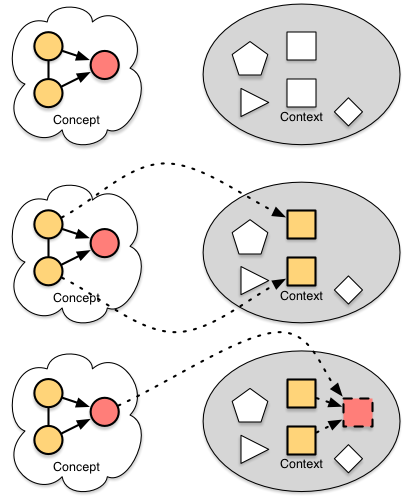 I was talking with a colleague, and he was opining about where he sees our industry. On the other hand, had some different, and some similar thoughts. I know there are regular reports on L&D trends, with greater or lesser accuracy. However, he was, and I similarly am looking slightly larger than just “ok, we’re now enthused about generative AI“. Yes, and, what’s that a signal of? What’s the context? Where are we at?
I was talking with a colleague, and he was opining about where he sees our industry. On the other hand, had some different, and some similar thoughts. I know there are regular reports on L&D trends, with greater or lesser accuracy. However, he was, and I similarly am looking slightly larger than just “ok, we’re now enthused about generative AI“. Yes, and, what’s that a signal of? What’s the context? Where are we at?
When I’m optimistic, I think I see signs of an awakening awareness. There are more books on learning science, for instance. (That may be more publishers and people looking for exposure, but I remain hopeful.) I see a higher level of interest in ‘evidence-based’. This is all to the good (if true). That is, we could and should be beginning to look at how and why to use technology to facilitate learning appropriately.
On the cynical side, of course, is other evidence. For example, the interest in generative AI seems to be about ways to reduce costs. That’s not really what we should be looking at. We should be freeing up time to focus on the more important things, instead of just being able to produce more ‘content’ with even less investment. The ‘cargo cult’ enthusiasm about: VR, AR, AI, etc still seems to be about chasing the latest shiny object.
As an aside, I’ll still argue that investing in understanding learning and better design will have a better payoff than any tech without that foundation. No matter what the vendors will tell you! You can have an impact, though of course you risk having a previous lack of impact exposed…
So, his point was that he thought that more and more leaders of L&D are realizing they need that foundation. I’d welcome this (see optimism, above ;). Similarly, when I argue that if Pine & Gilmore are right (in The Experience Economy) as to what’s the next step, we should be the ones to drive the Transformation Economy (experiences that transform you). Still, is this a reliable move in the field? I still see folks who come in from other areas of the biz to lead learning, but don’t understand it. I’ll also cite the phenomena that when folks come into a new role they need to be seen to be doing something. While them getting their mind around learning would be a good step, I fear that too many see it as just management & leadership, not domain knowledge. Which, reliably, doesn’t work. Ahem.
Explaining the present, let alone predicting the future, is challenging. (“Never predict anything, particularly the future!”) Yet, it would help to sort out whether there is (finally) the necessary awakening. In general, I’ll remain optimistic, and continue to push for learning science, evidence, and more. That’s my take. What’s yours? Where are we at?



